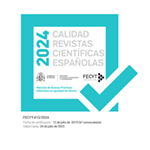Bioart: Transhuman and Posthuman Performance
Abstract
For over a century, science fiction has gripped the attention of audiences world-wide, with some of its most successful achievements furnishing the world with utopian and dystopian narratives about the progress of science and the limits of humanity's ability to understand its own complexity and place in the world. However, it is only in the last 30 years that ideas of transhumanism and posthumanism have become part of the intellectual influences of various other art forms that engage with similar subject matter. It is even more recent that posthuman and transhuman scholars have interpreted the work of many pioneering artists and designers as manifestos for their ideas, or as rejections of the possible futures their ideas imply. This is not to say that transhumanist and posthumanist thought is absent from art works that precede this period, but that the explicit link between theories of post-/trans- humanism and such artwork has only recently been made.
This article makes explicit the association of certain art forms and art works to trans- and posthumanist ideas, which have become constitutive of the political, cultural and philosophical differences and similarities that exist between these concepts. It discusses a range of art practices with a view to identifying themes within trans- and posthuman art, while also articulating some of the foundational contributions in this field. It begins by advancing a definition of bioart to capture the common ground between transhuman and posthuman art. It then considers interpretations of such works and rejection of their collective definition, by drawing attention to their socio-political and bioethical context. Finally, I consider how one may read bioart from the perspective of transhuman and posthuman thought. Throughout, some of the defining artists in the fields of transhuman and posthuman art are considered.
Downloads
Publication Facts
Reviewer profiles N/A
Author statements
- Academic society
- N/A
- Publisher
- Grupo de Investigación Cultura Digital y Movimientos Sociales. Cibersomosaguas
Article download
License
In order to support the global exchange of knowledge, the journal Teknokultura is allowing unrestricted access to its content as from its publication in this electronic edition, and as such it is an open-access journal. The originals published in this journal are the property of the Complutense University of Madrid and any reproduction thereof in full or in part must cite the source. All content is distributed under a Creative Commons Attribution 4.0 use and distribution licence (CC BY 4.0). This circumstance must be expressly stated in these terms where necessary. You can view the summary and the complete legal text of the licence.













